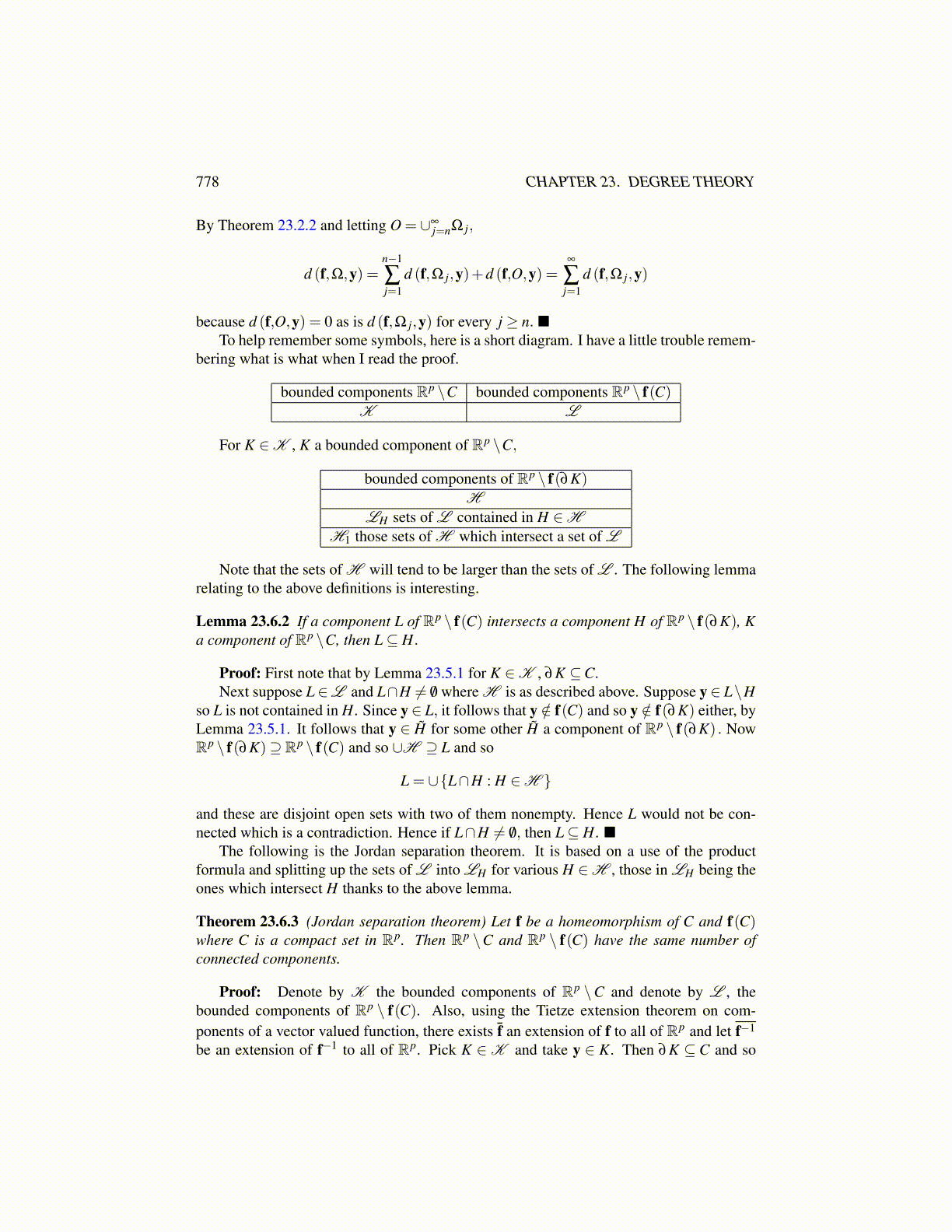
778 CHAPTER 23. DEGREE THEORY
By Theorem 23.2.2 and letting O = ∪∞j=nΩ j,
d (f,Ω,y) =n−1
∑j=1
d (f,Ω j,y)+d (f,O,y) =∞
∑j=1
d (f,Ω j,y)
because d (f,O,y) = 0 as is d (f,Ω j,y) for every j ≥ n.To help remember some symbols, here is a short diagram. I have a little trouble remem-
bering what is what when I read the proof.
bounded components Rp \C bounded components Rp \ f(C)K L
For K ∈K , K a bounded component of Rp \C,
bounded components of Rp \ f(∂K)H
LH sets of L contained in H ∈HH1 those sets of H which intersect a set of L
Note that the sets of H will tend to be larger than the sets of L . The following lemmarelating to the above definitions is interesting.
Lemma 23.6.2 If a component L of Rp \ f(C) intersects a component H of Rp \ f(∂K), Ka component of Rp \C, then L⊆ H.
Proof: First note that by Lemma 23.5.1 for K ∈K , ∂K ⊆C.Next suppose L ∈L and L∩H ̸= /0 where H is as described above. Suppose y∈ L\H
so L is not contained in H. Since y∈ L, it follows that y /∈ f(C) and so y /∈ f(∂K) either, byLemma 23.5.1. It follows that y ∈ H̃ for some other H̃ a component of Rp \ f(∂K) . NowRp \ f(∂K)⊇ Rp \ f(C) and so ∪H ⊇ L and so
L = ∪{L∩H : H ∈H }
and these are disjoint open sets with two of them nonempty. Hence L would not be con-nected which is a contradiction. Hence if L∩H ̸= /0, then L⊆ H.
The following is the Jordan separation theorem. It is based on a use of the productformula and splitting up the sets of L into LH for various H ∈H , those in LH being theones which intersect H thanks to the above lemma.
Theorem 23.6.3 (Jordan separation theorem) Let f be a homeomorphism of C and f(C)where C is a compact set in Rp. Then Rp \C and Rp \ f(C) have the same number ofconnected components.
Proof: Denote by K the bounded components of Rp \C and denote by L , thebounded components of Rp \ f(C). Also, using the Tietze extension theorem on com-ponents of a vector valued function, there exists f̄ an extension of f to all of Rp and let f−1
be an extension of f−1 to all of Rp. Pick K ∈K and take y ∈ K. Then ∂K ⊆ C and so